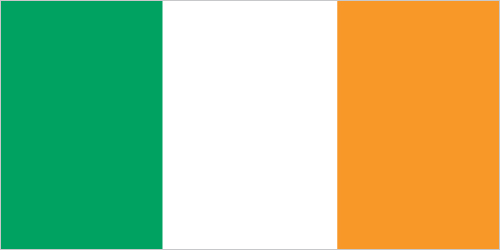
Ireland is a small, modern, trade-dependent economy. Ireland was among the initial group of 12 EU nations that began circulating the euro on 1 January 2002. GDP growth averaged 6% in 1995-2007, but economic activity has dropped sharply since the onset of the world financial crisis. Ireland entered into a recession in 2008 for the first time in more than a decade, with the subsequent collapse of its domestic property market and construction industry. Property prices rose more rapidly in Ireland in the decade up to 2007 than in any other developed economy. Since their 2007 peak, average house prices have fallen 47%. In the wake of the collapse of the construction sector and the downturn in consumer spending and business investment, the export sector, dominated by foreign multinationals, has become an even more important component of Ireland's economy. Agriculture, once the most important sector, is now dwarfed by industry and services. In 2008 the former COWEN government moved to guarantee all bank deposits, recapitalize the banking system, and establish partly-public venture capital funds in response to the country's economic downturn. In 2009, in continued efforts to stabilize the banking sector, the Irish Government established the National Asset Management Agency (NAMA) to acquire problem commercial property and development loans from Irish banks. Faced with sharply reduced revenues and a burgeoning budget deficit, the Irish Government introduced the first in a series of draconian budgets in 2009. In addition to across-the-board cuts in spending, the 2009 budget included wage reductions for all public servants. These measures were not sufficient to stabilize Ireland’s public finances. In 2010, the budget deficit reached 32.4% of GDP - the world's largest deficit, as a percentage of GDP - because of additional government support for the country’s deeply troubled banking sector. In late 2010, the former COWEN government agreed to a $92 billion loan package from the EU and IMF to help Dublin recapitalize Ireland’s fragile banking sector and avoid defaulting on its sovereign debt. Since entering office in March 2011, the new KENNY government has intensified austerity measures to try to meet the deficit targets under Ireland's EU-IMF program. Ireland has grown slowly since 2011, but managed to reduce the budget deficit to 7.2% of GDP in 2013. In late 2013, Ireland formally exited its EU-IMF bailout program, benefiting from its strict adherence to deficit-reduction targets and success in refinancing a large amount of banking-related debt.
$190.4 billion (2013 est.)
country comparison to the world: 59
$189.3 billion (2012 est.)
$189 billion (2011 est.)
0.6% (2013 est.)
country comparison to the world: 184
0.2% (2012 est.)
2.2% (2011 est.)
$41,300 (2013 est.)
country comparison to the world: 25
$41,300 (2012 est.)
$41,300 (2011 est.)
agriculture: 1.6%
industry: 28%
services: 70.4% (2013 est.)
5.5% (2009)
0.6% (2013 est.)
country comparison to the world: 15
1.7% (2012 est.)
2.161 million (2013 est.)
country comparison to the world: 120
agriculture: 5%
industry: 19%
services: 76% (2011 est.)
13.5% (2013 est.)
country comparison to the world: 132 14.7% (2012 est.)
pharmaceuticals, chemicals, computer hardware and software, food products, beverages and brewing; medical devices
0.2% (2013 est.)
country comparison to the world: 162